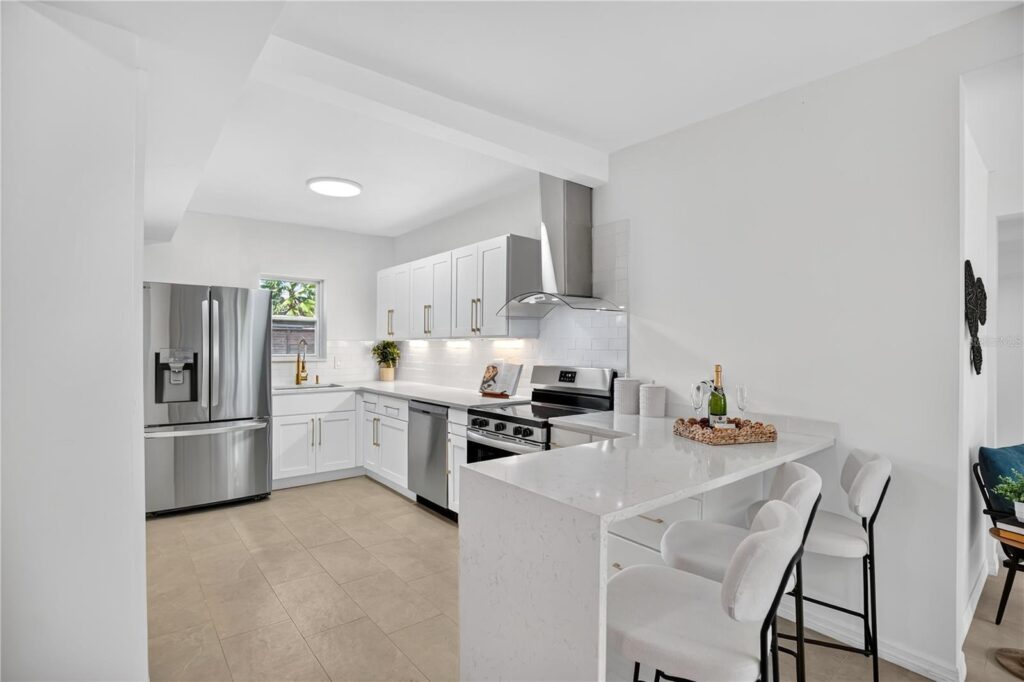Climate Change & Rising Insurance Costs in Florida Real Estate
Leave a Comment
Florida has long been one of the most desirable real estate markets in the country, known for its lifestyle appeal, steady population growth, and diverse housing options. But in recent years, two interconnected forces — climate change and rising homeowners insurance costs — have begun reshaping how buyers, sellers, and property owners approach real estate decisions across the state.
From coastal flooding and stronger storms to soaring insurance premiums and policy availability concerns, these changes are no longer abstract future risks. They are already influencing property values, affordability, and market behavior throughout Florida.
For homeowners, buyers, and real estate professionals working with Olde Town Brokers, understanding how these factors intersect is essential for making informed decisions in today’s evolving market.
Why Climate Change Matters in Florida’s Real Estate Market
Florida’s geography makes it especially vulnerable to climate-related risks. With thousands of miles of coastline, low-lying terrain, and a subtropical climate, the state faces challenges that directly affect real estate.
Key Climate Risks Affecting Property
Some of the most impactful climate related issues influencing Florida real estate include:
- Sea level rise, increasing the risk of tidal flooding in coastal and low elevation communities
- Stronger and more frequent hurricanes, leading to higher damage potential
- Inland flooding from heavier rainfall and overwhelmed stormwater systems
- Saltwater intrusion, which can affect infrastructure and freshwater supplies
While these issues may seem gradual, their financial impact is becoming increasingly immediate, particularly when it comes to insurance and long term property value.
The Insurance Market: A Growing Pressure Point for Homeowners
Insurance is a foundational part of Florida real estate transactions. Mortgage lenders require coverage, buyers factor premiums into affordability, and homeowners rely on policies for long term financial protection.
In recent years, Florida homeowners have seen:
- Significant premium increases
- Policy non renewals in higher risk areas
- Fewer private insurance options
- Greater reliance on the state backed insurer of last resort
These shifts are driven by a combination of climate risk, rising construction costs, reinsurance challenges, and past storm losses. As a result, insurance has become one of the fastest-growing components of homeownership costs in Florida.
How Rising Insurance Costs Affect Affordability
Higher insurance premiums directly impact what buyers can afford, even when home prices remain stable.
Total Cost of Ownership Matters More Than Ever
When evaluating affordability, buyers must consider:
- Mortgage principal and interest
- Property taxes
- Homeowners insurance premiums
- Flood insurance (when required)
- Maintenance and reserves
In many cases, rising insurance costs can add hundreds or even thousands of dollars annually, pushing monthly housing costs beyond a buyer’s comfort zone. This has led some buyers to:
- Reconsider certain neighborhoods or property types
- Look inland or at higher elevations
- Choose newer construction with updated building standards
The Impact on Home Values and Market Demand
Insurance costs don’t just affect buyers, they also influence home values.
Pricing Pressure in High Risk Areas
When insurance premiums rise sharply in a specific area, buyers may demand price adjustments to offset higher carrying costs. This can lead to:
- Longer days on market
- More negotiation during contract
- Reduced buyer pools for certain properties
Over time, these dynamics can place downward pressure on values in higher risk areas, while homes with lower insurance costs or stronger mitigation features may retain value more effectively.
Coastal vs. Inland: Shifting Buyer Preferences
Not all Florida markets are affected equally.
Coastal Communities
Waterfront and coastal properties still hold strong lifestyle appeal, but buyers are becoming more selective. Factors such as elevation, construction quality, flood zones, and insurance availability now play a much larger role in decision-making.
Well maintained properties with resilient features may continue to perform well, while others face increased scrutiny.
Inland and Higher Elevation Areas
Many buyers are increasingly drawn to:
- Inland neighborhoods
- Higher elevation communities
- Areas with newer infrastructure and drainage systems
These locations often offer lower insurance premiums and fewer long term climate concerns, making them attractive for buyers focused on stability and predictability.
What This Means for Florida Homebuyers
Buyers navigating today’s Florida market should take a more comprehensive approach than ever before.
Key Considerations for Buyers
- Request insurance estimates early in the process
- Understand whether flood insurance is required; and how rates may change
- Review the age and condition of major systems (roof, windows, structure)
- Ask about past claims and mitigation features
Factoring insurance into your decision upfront can help avoid surprises later and lead to more confident long-term ownership.
What Sellers Should Know
For sellers, awareness and preparation can make a meaningful difference.
How Sellers Can Stay Competitive
- Price homes realistically, accounting for insurance trends in the area
- Highlight resilience upgrades such as new roofs, impact windows, or elevated construction
- Provide documentation for improvements that may help lower insurance costs
- Be prepared to answer buyer questions about premiums and coverage availability
Homes that demonstrate proactive maintenance and risk mitigation often stand out in a market where buyers are more cautious.
The Role of Real Estate Professionals
As climate and insurance concerns grow, the role of real estate professionals is evolving.
At Olde Town Brokers, the focus remains on education, transparency, and long term client success. That means helping clients understand not just the purchase price of a home, but the full picture of ownership; including insurance, resilience, and future marketability.
Providing clear information empowers clients to make decisions aligned with their goals and risk tolerance, whether they’re buying, selling, or holding property for the long term.
Long Term Market Outlook for Florida Real Estate
Despite these challenges, Florida real estate remains resilient.
Population growth, job opportunities, lifestyle appeal, and limited housing supply continue to support demand. However, the market is becoming more nuanced, with climate risk and insurance costs increasingly shaping where and how people choose to buy.
What to Expect Moving Forward
- Greater emphasis on resilient construction and infrastructure
- Continued insurance market adjustments
- Increased buyer education and due diligence
- A more risk aware pricing landscape
Homes and communities that adapt to these realities are likely to remain competitive and desirable over time.
Final Thoughts
Climate change and rising insurance costs are no longer background issues in Florida real estate, they are central factors influencing affordability, value, and buyer behavior.
For homeowners, buyers, and sellers, understanding these dynamics allows for better planning and smarter decision making. For real estate professionals, it reinforces the importance of education, transparency, and local market expertise.
As Florida’s real estate market continues to evolve, staying informed and working with professionals who understand both the market and the challenges shaping it will remain key to long term success.








